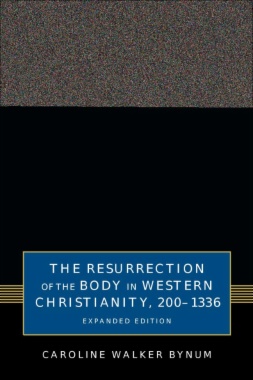Bynum examines several periods between the 3rd and 14th centuries in which discussions of the body were central to Western eschatology, and suggests that Western attitudes toward the body that arose from these discussions still undergird our modern notions of the individual. He explores the "plethora of ideas about resurrection in patristic and medieval literature--the metaphors, tropes, and arguments in which the ideas were garbed, their context and their consequences," in order to understand human life after death.
- Table of Contents
- List of Illustrations
- Introduction to the 2017 Edition: What’s New About the Medieval?
- Preface to the 1995 Edition: Acknowledgments and Methodological Musings
- Introduction to the 1995 Edition: Seed Images, Ancient and Modern
- Part I. The Patristic Background
- 1. Resurrection and Martyrdom: The Decades Around 200
- 2. Resurrection, Relic Cult, and Asceticism: The Debates of 400 and Their Background
- Part II. The Twelfth Century
- 3. Reassemblage and Regurgitation: Ideas of Bodily Resurrection in Early Scholasticism
- 4. Psychosomatic Persons and Reclothed Skeletons: Images of Resurrection in Spiritual Writing
and Iconography
- 5. Resurrection, Heresy, and Burial ad Sanctos: The Twelfth-Century Context
- Part III. The Decades Around 1300
- 6. Resurrection, Hylomorphism, and Abundantia: Scholastic Debates in the Thirteenth Century
- 7. Somatomorphic Soul and Visio Dei: The Beatific Vision Controversy and Its Background
- 8. Fragmentation and Ecstasy: The Thirteenth-Century Context
- Afterword: Why All the Fuss about the Body? A Medievalist’s Perspective
- Illustration Credits
- General Index
- Index of Secondary Authors
- Plates

